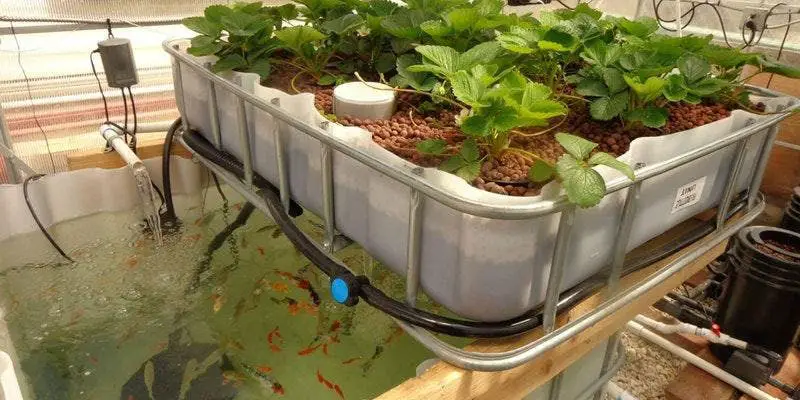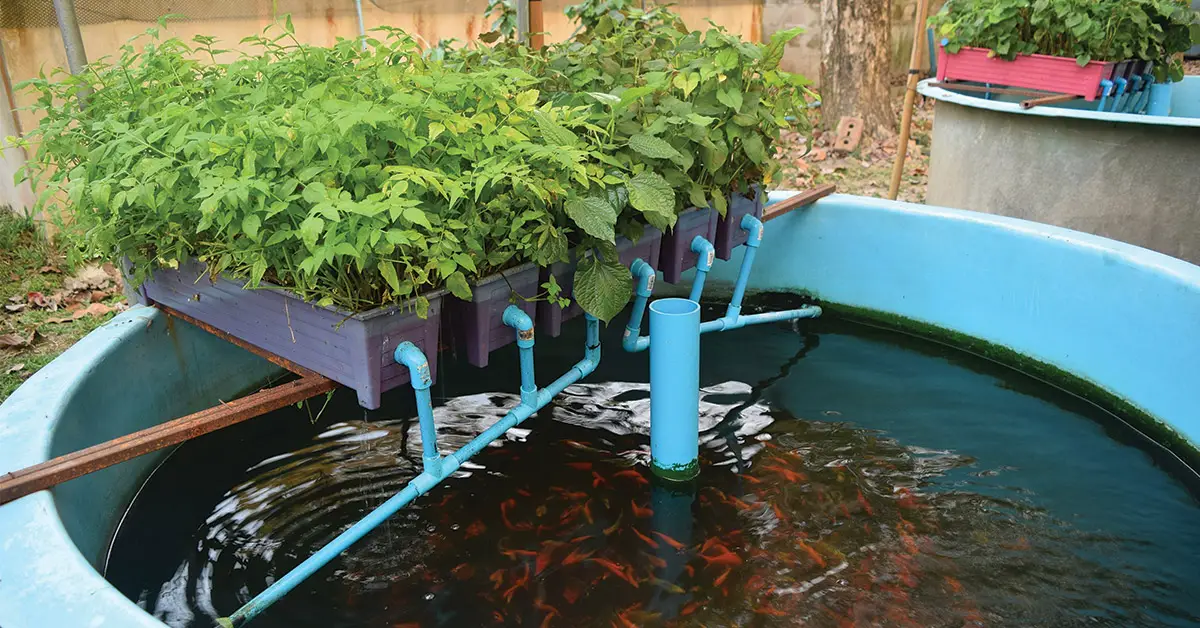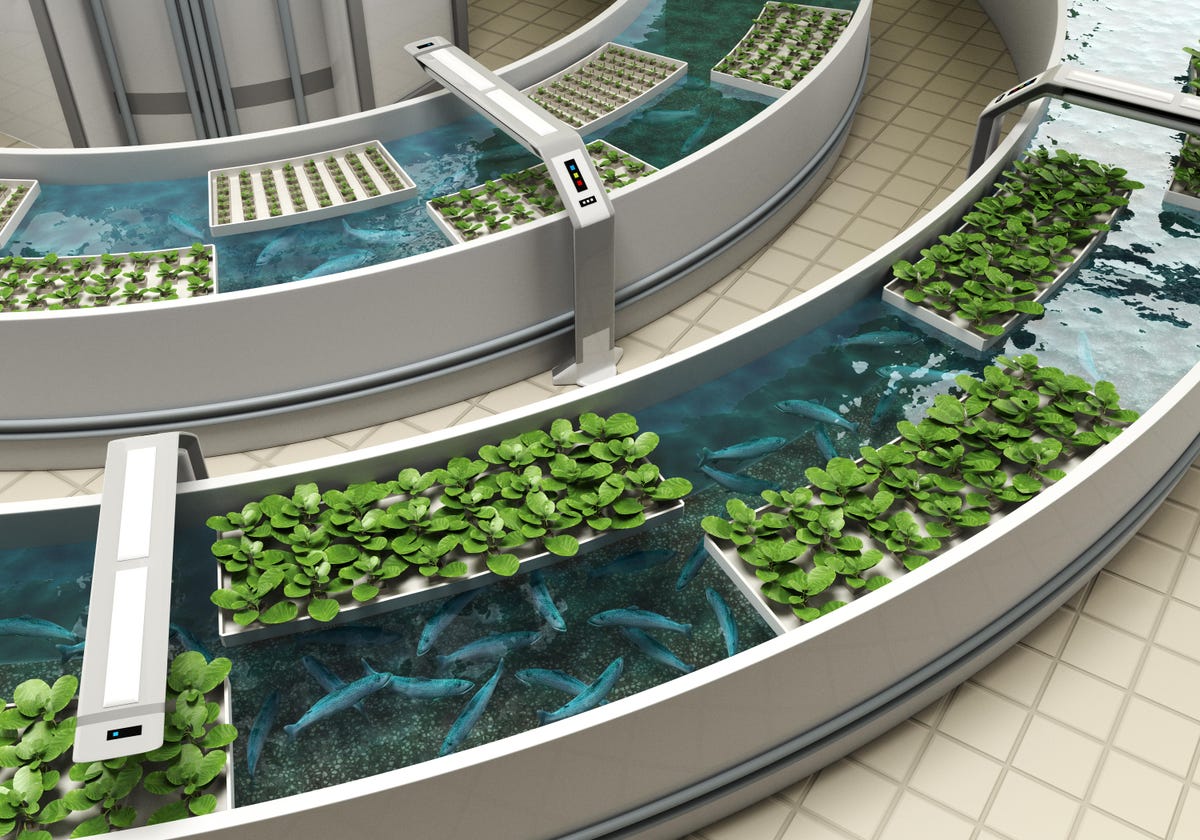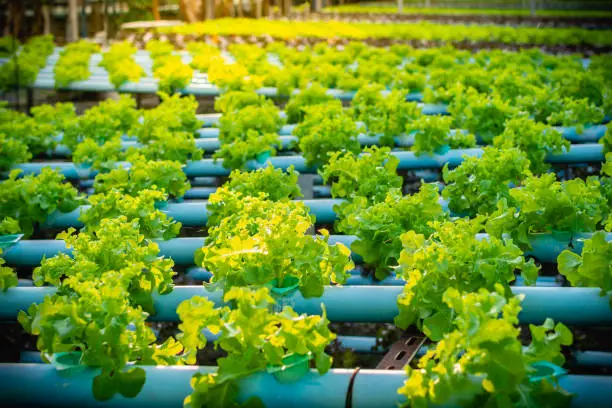What is aquaponics and how does it works?
Aquaponics is a hybrid of aquaculture (the cultivation of fish and other aquatic creatures) and hydroponics (the cultivation of plants without the need of soil). Aquaponics combines the two in a symbiotic relationship in which plants are fed the discharge or waste of aquatic animals. In exchange, the veggies help to clean the water that is returned to the fish.
Microbes, in addition to fish and their waste, play a significant part in plant nutrition. These beneficial bacteria colonize the gaps between the plant’s roots and convert fish waste and sediments into nutrients that the plants may use to thrive. The end result is a seamless integration of aquaculture and gardening.
Aquaponics looks promising for organic food production, aquaculture, and water conservation in the long run. Instead of being dumped in the water, fish excrement is recycled and used for plant development. The water is recirculated in a closed system, reducing resource use.


Types of systems:
Except for the addition of fish in the water tank, aquaponics employs essentially the same systems as hydroponics, therefore there aren’t many distinctions in how the system operates (s).
Drip irrigation, flood and drain, deep culture or water immersed roots, and the nutrient film technique are all highly suitable and adaptable to producing fish.
Importance of ph control in aquaponics
The importance of pH in aquaculture cannot be overstated. It’s a little confusing to get it just right because there are three living organisms to consider: your plants, your fish, and the bacteria in the water, each of which has a different pH requirement.
For the aquaponic garden, a pH of 6.8 to 7.2 is ideal. The pH will become acidic as a result of the fish waste, and you will need to purchase aquaponic appropriate pH adjusters. The plants will not be able to absorb nutrients adequately if the pH level is too low or too high for the system, and your fish will eventually perish. It’s critical to keep an eye on the pH level every day and keep it within the neutral zone.
One of the most common causes of fish or plant death, as well as gardening failure, is a pH that is excessively alkaline or acidic. The pH adjusters must be specifically constructed for this type of growing system, or the fish may be harmed. These adjusters can find at a local aquaponic gardening supply store. Another factor to consider is the hardness of the water, which has an impact on how the pH reacts when trying to alter it. When working with pH, it’s sometimes necessary to consider the water hardness as well. Because fish don’t like sudden changes in pH, consider lowering or raising it gradually.


Fish and other aquatic animals you can grow in aquaponics:
Fish are the ones who provide food for your plants. Freshwater fish are employed in this sort of aquaculture, with tilapia and barramundi being the most popular since they tolerate a wider range of water conditions and grow quickly.
Trout, in particular, can be used at colder water temps. Snails and shrimp are two other aquatic species that you can raise.
You can feed the fish either special fish food or other items like water lettuce and duckweed that you can buy at an animal store.
Vegetables that can grow in aquaponics:
You can grow veggies that don’t require a lot of nutrients in a modest aquaponic garden. Lettuce, kale, watercress, arugula, beautiful flowers, mint, herbs, okras, leeks, radishes, spinach, and other tiny vegetables.
Cabbage, tomatoes, cucumbers, beans, broccoli, and cauliflower may demand more nutrition and an aquaponic system that is well stocked or advanced. Plants that require acidic or alkaline water should not be grown since the pH levels will hurt the fish.

benefits of aquaponics
- Aquaponics is a method of growing fish and vegetables together. You feed the fish, and the fish, in turn, feed your plants with their excrement.
- No need to utilize fertilizers because the fish offer abundant nutrients to the plants.
- Aquaponics uses less water for the crops. Aquaponic gardens consume a tenth of the water that earth gardens use, according to research.
- Because regular gardening pesticides and other chemicals would kill the fish, they cannot be utilized.
- As a result, the vegetables are healthier and more organic.
- Because there is no soil in aquaponics, there are no soil-borne infections.
- You can grow plants in a little space and yield a large harvest.
- Plants develop quickly because the fish feces provides them with a lot of nutrients.
- Plants and fish can be grown in a temperature-controlled environment.
- Water is used in a closed system and effectively circulated, lowering consumption and water bills.
Sources: https://www.permaculturenews.org/2016/05/30/what-is-aquaponics-and-how-does-it-work/
Access Date: May 2022



